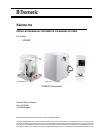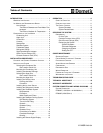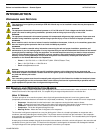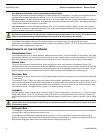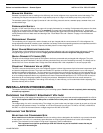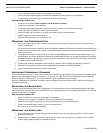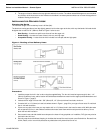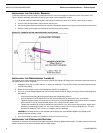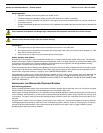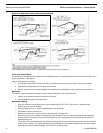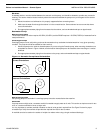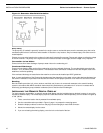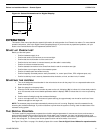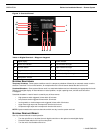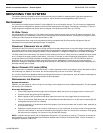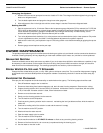
Eskimo Ice Installation Manual - Remote System INSTALLATION PROCEDURES
L-2448B ENGLISH 3
SEAWATER SYSTEM
Seawater is pumped into the ice-making unit to efficiently cool the hot refrigerant via a cupronickel coaxial tube design. The
condensing unit may be connected to its own single-station pump or to a larger, multi-station pump via a pump relay box.
The seawater system (Figure 3, page 8) consists of a thru-hull fitting, seacock, strainer, seawater pump, seawater hose, and
overboard discharge.
FRESHWATER SUPPLY
Use the 1/4" SAE male flare fitting on the auger unit to supply freshwater for ice making. Provide water with pressure of at least
15 PSI. An in-line water filter (included in kit) is mandatory to comply with Dometic Warranty Regulations, to help prevent
clogging of the needle valve in the water reservoir, and to help keep the auger walls from fouling with mineral deposits which will
cause premature failure of water seals and bearings. See “Fresh Water Filter and Y Strainer” on page 14 for maintenance
instructions.
REFRIGERANT CHARGE
The condensing unit, the auger unit, and the linesets are all pre-charged with the correct amount of R-134a refrigerant. No
charge adjustment should be necessary upon installation, but always confirm that operating pressures and superheat are within
the correct operating range. If service is required, see data plate for correct charge amount.
SIGHT GLASS/MOISTURE INDICATOR
The sight glass on the condensing unit provides visual moisture indication and is only functional when refrigerant is flowing
through the sight glass for at least 10 minutes. Sight glass should not be used for refrigerant charging or status.
QUICK-CONNECT FITTINGS (QC)
The quick-connect fittings allow all parts of the system to be factory evacuated and precharged with refrigerant. They also
provide easy and quick installation in the field, and are polarized so they can not be hooked up incorrectly. The fittings can be
reused if the unit is ever relocated. Note: Fittings should be lubricated with 134a-compatible oil to ensure a proper seal.
CONSTANT PRESSURE VALVE (CPV)
The CPV is used as the expansion valve of the refrigerant system. It allows high-pressure liquid to become low-pressure liquid
and start the refrigeration process. The simple and reliable CPV provides a constant system pressure over a wide range of
ambient and seawater temperatures. The valve pressure is set at the factory and should not require any field adjustments. On
the rare occasion that an adjustment is necessary, the system must be correctly charged and operating for at least 20 minutes
at an ice-making temperature before any adjustments are made. Recommended pressure is 6 to 7.5 PSI (6.8 PSI is ideal) as
determined by an accurate gauge capable of reading low-pressures. Misadjustment of the valve can cause reduced ice
production, damage to components, and voiding of the warranty. If under warranty, call for authorization before adjusting CPV,
otherwise warranty will be voided.
INSTALLATION PROCEDURES
This section covers the installation procedures for your ice-making system. Read the manual completely before attempting
to install any equipment.
CHOOSING THE CORRECT EQUIPMENT VOLTAGE
Know the frequency and voltage provided where your ice-making system will be used and select the appropriate 60 Hz or 50 Hz
model. Do not operate a 60Hz unit on 50Hz power or a 50Hz unit on 60Hz power, as this will cause damage and void the
warranty.
The voltage rating of a unit is a nominal rating. The voltage in a given location may be higher or lower by as much as 10% and
the system will still operate correctly. For example, in a 60 Hz environment you may see 110 VAC to 120 VAC, or 208 VAC to
240 VAC. In a 50 Hz environment common voltages range from 220 VAC to 240 VAC.
INSTALLING THE SYSTEM
SELECTING THE CONDENSER SITE
Never install the unit in the bow of the boat. Dometic ice-making units are designed to be installed in any convenient location
on the transom, in the aft, or in a machinery space that does not require ignition protection that is as far aft of midship as
possible. The condenser can be located in living areas if necessary. Some considerations:
• This equipment is not ignition protected per CFR 183.410 and may not be installed in areas that may be
exposed to flammable gas.



